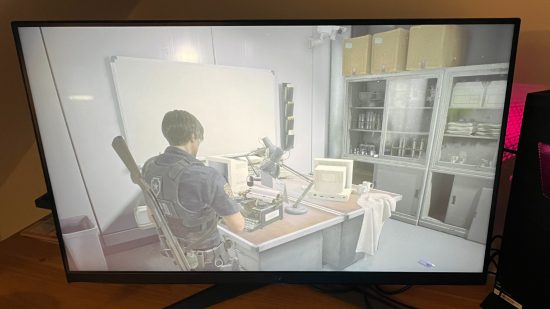Our Verdict
A great way to get started with 4K gaming, albeit at a price. LG is a trusted brand for a reason, but struggles to offer any home run features that make the LG UltraGear 32GR93U-B a must-have, and instead it's a performance driven monitor that does exactly what you expect it to.
- Super responsive
- Solid viewing angles
- Great I/O placement
- Low contrast ratio
- No swivel
I’ve been a longtime fan of LG UltraGear gaming monitors, but this was admittedly a blind loyalty born from having been the first brand that I spent my own money on. From there, I just always looked to LG to provide the same level of quality product-to-product. I’m once again happy to see this trust backed up by the release of the LG UltraGear 32GR93U-B, another great gaming monitor that is an ideal way to jump into 4K gaming.
While the LG UltraGear 32GR93U-B is a great mid-range screen, it does admittedly struggle to offer any standout feature to help it stand out from the crowd. Still, its performance lends itself to a display that should be among the best 4K gaming monitors on the market right now.
Why you can trust our advice ✔ At PCGamesN, our experts spend hours testing hardware and reviewing games and VPNs. We share honest, unbiased opinions to help you buy the best. Find out how we test.
| Screen Size | 32 inches |
| Native Resolution | 3840×12160 |
| Max Refresh Rate | 144Hz |
| Panel Type | IPS |
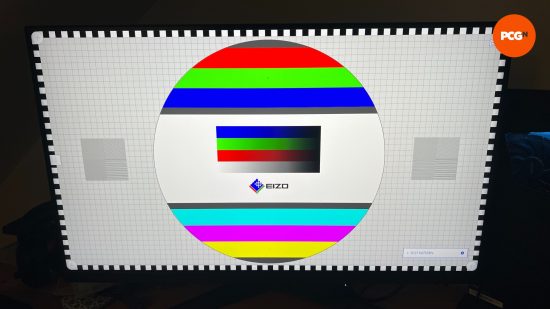
LG UltraGear 32GR93U-B features
The LG UltraGear 32GR93U-B throws out a lot of listed features, but many of which are to be expected with a mid-range 4K gaming monitor, particularly one from a brand like LG.
Starting with the display, we have a 32-inch UHD (3840×2160) 144Hz IPS screen, with a 1ms response time, VESA Display HDR 400, and support for both AMD FreeSync Premium and Nvidia G-Sync.
Within the monitor GUI, there are some added features like a crosshair and FPS counter, but these again are common in the market. Dynamic Action Sync, however, is a more useful bit of tech, designed to reduce the delay of input signals to your graphics card. It’s automatically activated at any refresh rate setting of 60Hz or higher.
Finally, the LG UltraGear 32GR93U-B comes with a four-pole headphone out port, with DTS Headphone:X, allowing for virtual 3D audio if you have a compatible gaming headset.
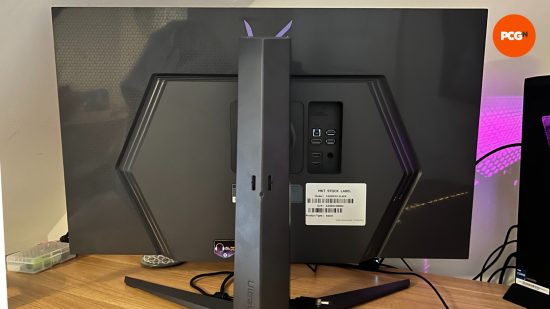
LG UltraGear 32GR93U-B design
The design of the LG UltraGear 32GR93U-B is basic. That’s not to use the word as a negative, but, visually speaking, there is nothing here to really excite anyone until it’s switched on and in use. With the monitor being 32 inches, the stand is quite wide and gives off the impression that it doesn’t sit flush against the desk, but it’s a slight trick of the eyes and just the plastic coating over the metallic feet that doesn’t extend down. Moving the LG UltraGear 32GR93U-B is a little tricky, as the pads on the stand are quite stiff, meaning it won’t slide around your desk, and you may be better off lifting it to make even minor adjustments.
Likewise, there is no swivel in the monitor, meaning if you plan to use it in a dual setup, you can’t adjust the screen to get the perfect angle, you have the move the entire monitor. Repeatedly having to move the entire monitor can get a little frustrating after a while, especially as someone who is always making adjustments to my desktop. The weight of a 32-inch monitor is also quite substantial, further adding to the pain of constant readjustments. The monitor does, however, does pivot into a portrait orientation.
One major win for the LG UltraGear 32GR93U-B is the placement of its I/O, with it being a straight rear-facing block. This means that after a while you’ll be able to blindly swap cables around and I find it’s just generally a more pleasant experience than placing the I/O on a ridge facing the desktop, an issue I found quite problematic with the design of the MSI MAG 325CQRD QD.
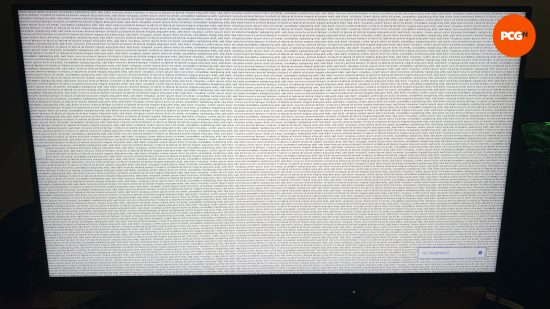
LG UltraGear 32GR93U-B performance
A lot of my time testing the LG UltraGear 32GR93U-B was done while also looking at the MSI MAG 325CQRF QD, a curved 1440p, 170Hz monitor. The reason I mention this is because I was using this LG as a benchmark, given its IPS screen vs the VA on the MSI.
I feel like the LG should have won out in performance in virtually every category but with the contrast ratio on the low side at just 1000:1 and a 95% PCI-P3 color range, it was lagging behind the MSI MAG 325CQRF QD, but ahead of the Thermaltake TGM-V23CQ, so a mixed bag overall. As with any gaming display, I used it with the out-of-the-box settings first, just to see how optimized it was, and there really aren’t any complaints to be made. The default settings had HDR and DAS enabled while at the full 144Hz setting.
When the time came to play around with the settings, I was disappointed to find that there were only four profiles within the GUI, and the details of what was different between each one were nowhere to be found. Gamer 1, Gamer 2, FPS, and RTS don’t really do much to distinguish what about each setting makes it tick. This level of customization was present in much older models of the UltraGear line, so it’s a shame that it is absent here.
That being said, I never felt the need to deviate from the default setup, which speaks volumes to its optimization. I always like to boot up a range of diverse games to test monitors. Ideally, the games are drastically different in how they present color and brightness. My go-to here was Resident Evil 2 Remake and Forza Horizon 5.
These games are at opposite ends of the color scale and it makes for a great way to test the strengths and weaknesses of a gaming monitor’s performance. At 144Hz, both games are incredibly smooth, with no screen tearing is lag to be found. In Resident Evil 2, the clarity across the board is insane. It’s rare that I follow the brightness and gamma recommendations for a game, and have no issue with vision in the darker moments of a game. While my PC hardware does a lot of the heavy lifting here, the way the LG UltraGear 32GR93U-B ensures that the clarity is there is brilliant, and it does this without the help of any additional settings. It felt like I was finally able to play RE2 the way it was intended, without compromise, because I finally had a display worthy of the game.
The same can be said for Forza Horizon 5, although this is more a test of colors and making sure that there is a distinction between various tones and shades. From a standstill viewpoint, the LG UltraGear 32GR93U-B makes Forza Horizon 5 look beautiful, but it raised some questions about 4K gaming in general for these high refresh rate monitors.
In order to really get the best out of a 4K, 144Hz display, you’ll need to be packing some serious hardware in your gaming rig. While the question of whether high frame rate 4K gameplay is a possibility for most, future-proofing yourself with the LG UltraGear 32GR93U-B is a very sound strategy.
It also has to be mentioned that with a native 4K display, upscaling solutions like Nvidia DLSS and AMD FSR become more useful, if not invaluable. In terms of image quality, targeting a higher resolution becomes much more feasible thanks to the similarly higher rendering resolution. For example, running DLSS in ‘Performance’ at 4K resolution will typically render the game at 1080p, whereas 1080p displays will instead render at 540p, requiring more guesswork from the upscaler. This isn’t an advantage unique to the LG UltraGear 32GR93U-B, but something worth considering if the thought of running games at higher resolutions intimidates you.
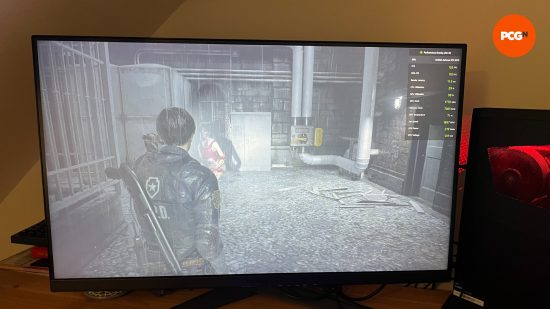
Should you buy the LG UltraGear 32GR93U-B?
It’s hard to outright recommend the LG UltraGear 32GR93U-B as anything other than a mid-range 4K gaming monitor that relies heavily on solid performance to establish itself as a contender, despite packing features that are fairly common in the market.
At $799.99 / £649.99, you may want to wait for sales before taking the plunge, but a cheap 4K gaming monitor likely isn’t going to be anywhere near as reliable, so you have to expect to pay a price with a brand like LG.
Verdict
I’m at odds with how I feel about the LG UltraGear 32GR93U-B, because a relatively plain design could be viewed negatively given the cost, but its performance is unquestionable, despite a lacking contrast ratio.
Overall, if you’re in the market for a 4K gaming monitor, you should definitely consider the LG UltraGear 32GR93U-B as your next display, but without a killer feature to clinch it over the competition, it’s going to struggle to stand out in the crowd.
